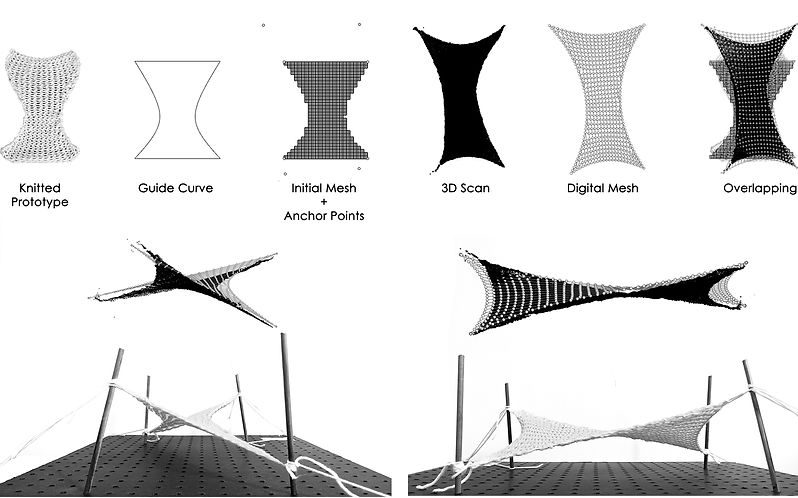TENSION
STRUCTURES
TENSION
STRUCTURES

As an introduction to the design and understanding of tension structures and the correlation between form, force, and material, the studio was planned to understand basic architectural elements and design principles associated with lightweight tension structures. The principal goal of the studio was to critically analyze tension structures through physical modeling, and digital simulations.
Studio Components | Project 1: Precedent as Research
Project 2: Prototyping Project 3: Final Design and Installation
Directed Research Studio
Penn State University
2021
Instructor: Felicia Davis

PROJECT 1: PRECEDENTS PHILIPS PAVILION
Philips Pavilion by Le Corbusier was studied as a precedent formed by a cluster of nine tangled hyperbolic-paraboloids. The original method of form findings devised by Le Corbusier was also explored and studied. The goal was to explore the geometric characteristics of the skin of the structure through digital and physical modeling using different materials to better understand the logic behind the hyperbolic surfaces.

PROJECT 2: PROTOTYPING KNITTED FABRIC STRUCTURES
The purpose of this project of the studio was to learn how to work and design with knitted fabrics under tension to make tension structures. The focus of this part of the course is to work with yarns and various fabrication tools to produce small, knitted prototypes that will be tensioned and then compared to digital models. The primary point of Project 2 is to begin to work with feedback loops between the physical tensioned model and the simulation or digital variables to understand how to model a knitted structure in Grasshopper.
Explored variables: - Initial Shape - Yarn - Boundary Conditions - Tension applied during the knitting - Force used to weight final shape

PROJECT 3: UN-TENSIONING FORCES
An assembly of tensile hyperbolic paraboloids, each balancing the other, creating a perfect central harmony. The "anchors" of each hypar can be manipulated through pivotal shifts and varying tensions, creating a system able to counter higher loads via modification.
Due to scale limitation, the hypars were knitted in two separate pieces and joined afterward. The pattern on the left was used to knit the main hypar. The smaller hypars were knitted based on a similar pattern with a different number of stitches.




